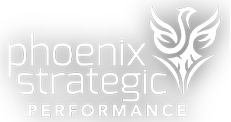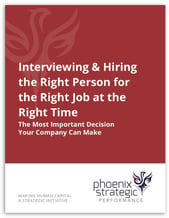A start-up to growth story – the very definition of continual change
 ‘What got you here, will likely not get you to where you are going!’ In the world of of start ups, these words should resonate with every founder /owner / executive team. In our recent Case Study: It's Time for GrowUp to Grow Up, we discussed the changes that a tech start up, or any start up, goes through in the early stages. Change permeates every facet of a start-up organization, as it:
‘What got you here, will likely not get you to where you are going!’ In the world of of start ups, these words should resonate with every founder /owner / executive team. In our recent Case Study: It's Time for GrowUp to Grow Up, we discussed the changes that a tech start up, or any start up, goes through in the early stages. Change permeates every facet of a start-up organization, as it:
- develops product
- takes product to market
- hires new people beyond the original group
- adapts to the demands of bankers and financing
Literally, every day can represent a change that needs to be anticipated, understood and responded to. But somehow, the start up community often thinks they are exempt from the demands of change because they believe themselves to be the disrupters or agents of change, and therefore, different from other organizations. In addition, they believe that change issues are reserved for those organization that are older, bigger or more status-quo driven. They couldn’t be farther from the truth. Why? The very nature of a startup is steeped in change.
For the three reasons below, a start-up operation is in a state of constant change, until it is no longer a start up or it’s out of business. To accelerate growth and achieve revenue producing status, your human capital philosophy and processes (or lack thereof) will either make or break your organization. The sooner you put rigor and discipline into your organization, the faster and more efficiently you will grow up. And after all, isn’t that the point!
Adding to staff and growing the human capital side of your business
When you hire a new staff member making your group size 5 instead of 4, you have substantially increased your staff's size. Remember, you are adding a new dynamic to your organization and introducing potential new dimensions to your current culture.
Three counter-intuitive concepts to consider:
1. Hiring – It’s not about hiring a friend of a friend!
Hire the right person for the benchmarked job. Make sure your hire the person you will need for the present to the future, not someone you know who could be a ‘good set of hands’. You need to benchmark the job against the ideal position requirements, and hire someone as close to that benchmark as possible. Every single person on your staff is critical to the success of your venture. There is no room for error. It is better not to hire anyone than to make a wrong hiring decision. It may take you months, if not years, to figure it out the problem / mistake. Think of the cost to the organization if you get it wrong. Start ups are known for being ‘people lean’ on the people side – often putting people in roles – just because! Take a page from a large organization playbook and put real rigor and discipline into your hiring process. Remember, hire the right person for the desired position. A mistake here can be a company-threatening decision.
2. Culture – It can be your most powerful organizational tool.
Beware of the US vs. THEM syndrome where the original group of employees “know what this organization is all about. We have been here from the beginning and you will conform to our scared culture.” If it were only so simple. Organizations are social networks with a human dynamic that has an emotional and values-based component. Without careful monitoring and planning, the ‘sacred culture’ will change and morph with every new person that enters your organization. It is part of the dynamic. As start-up companies begin to expand, organizations often end up with a split culture, where there is tension between old employees and new hires. It is not uncommon to see shadow cultures splinter off the existing culture when management thinks culture is one thing and the people know the culture is actually something very different. All organizations have a culture. However, don’t kid yourself into thinking that culture is static. Culture is as dynamic as the people you hire. Cultures gradually morph. Maintaining the culture you want requires careful thought, consideration and planning to ensure that your culture stays in tact. It doesn’t ‘just happen’.
3. Structure – It’s what makes and sustains a real organization!
In the start-up community, there is often a wholesale rejection of a defined company structure, which is mistakenly perceived as a bad thing. Start ups seem to bask in the illusion that structure will get in the way of getting things done. That concept couldn’t be farther from the truth. I have heard people state that they have no organization chart, or question why they need clarity around roles and responsibilities, wanting a flat organization. ‘For profit’ organizations are not casual groups of people who just come together. They should be people who:
- organize themselves to achieve results
- within a timeframe that meets business objectives
- to get a product to market
- to meet and beat competitive challenges
- to make a profit
Role clarity must be defined and a structure set up where everyone know who does what. Otherwise, the result is chaos, bottlenecks, missed deadlines and compromised opportunities. That doesn’t sound like a financially viable operation that investors would want to invest in.
So start ups – it’s not too soon to grow up!
Are you a start-up? Download our latest case study to learn about the strategy, structure and human capital challenges a start-up company faced during its first 24 months.






